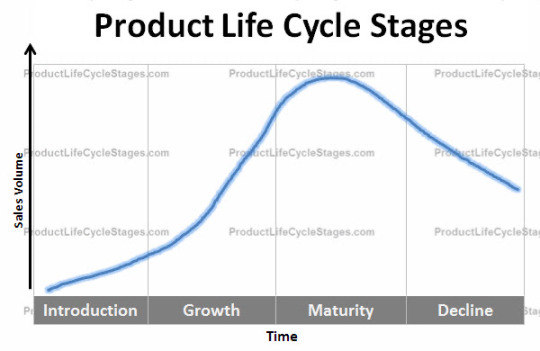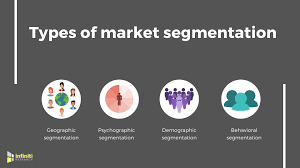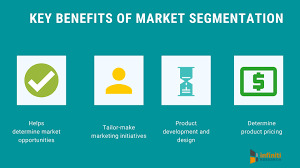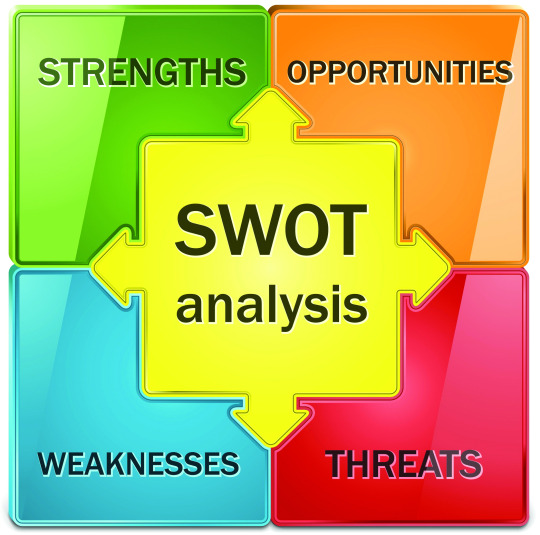Text
What are the major reasons sports properties and sponsors decide to enter sponsorship agreements?
According to Shank and Lyberger (2015), there are two types of sponsorship objectives, direct and indirect. Direct is geared to increasing sales of a product. Indirect is about brand awareness, increasing brand loyalty and attempting to reach new target markets.
The recipient of a sports sponsorship is named the sports property. Sponsorship's will usually benefit both parties, with the sports property receiving cash and goods and services, while the sponsor receives targeting advertising and promotional rights. Sponsors hope that by investing in a sports property, they will increase consumers awareness of their brand, also increasing brand equity (Smith 2008).
For a sports property, the reasons for entering a sponsorship so corporately they can increase mass media exposure and promote their public image. From a marketing perspective, developing a brand image and increasing credibility among its consumers via its sponsor are key focuses for a sports property. For its operational objectives, obtaining funding from a sponsor to improve areas of need, increasing staff and stakeholder satisfaction through having a credible sponsor are key for a sports property.
For a sponsor, entering a sponsorship agreement allows them to promote their public image using the sports property as leverage, which in turn will allow them to generate goodwill among consumers. Sponsors are also looking to increase their market share of a product they have by creating a brand association between that sports property, the sport and themselves. Developing this brand equity is crucial for a successful sponsorship, which allows the sponsor to develop new relationships and distribution channels and attract new audiences.
An example of a sports sponsorship between a sports property and a sponsor was the company GoDaddy becoming the official sponsor to the 2019 ICC Cricket World Cup, as seen below

World Cup Trophy (My mobile team 2019)
youtube
(Jacques Kallis Chooses His Go Daddy Greatest XI 2019)
These are two examples of ways the sports property, in this case the ICC, used its sponsor Go Daddy to promote its own content and increase the brand awareness of Go Daddy. Larger visibility, increased credibility, and improved image, were just a few examples which fed into Go Daddy's reasoning to partner with the ICC for the Men's Cricket World Cup (Arora 2019)
References
Arora, N 2019, Sport and sponsorship: The value of event sponsorship, viewed 9 June 2020, https://www.cmo.com.au/blog/food-thought/2019/08/07/sport-and-sponsorship-the-value-of-event-sponsorship/.
Jacques Kallis Chooses His Go Daddy Greatest XI 2019, online video, 10 June, Icc, viewed 9 June 2020, https://www.youtube.com/watch?v=_ICTPF-A2tA.
My mobile team 2019, ‘World cup trophy’, photograph, viewed 9 June 2020, https://www.mymobileindia.com/infocus/godaddy-becomes-official-sponsor-icc-mens-cricket-world-cup-2019/amp.
Shank, M & Lyberger, M 2015, ‘Sports marketing: A strategic perspective, 5th edn, Routledge, London, UK.
Smith, A 2008, ‘Introduction to sport marketing’, Elsevier, Burlington, USA.
0 notes
Text
Why is public relations such a useful tool for sports organisations with constrained resources?
Public relations involve effective communication between an business and the people organisations are interested in marketing to (Boyle & Haynes 2014). An organisation must have good relationships with the local community, fans, and government departments to obtain positive PR.
For organisations, they must identify what kind of information about their products their consumers will be interested in and communicate their message in a way that improves the organisations reputation (Hutchins & Rowe 2012). This may be achieved through direct interactions with its members and consumer base (e.g. public meetings), or through market research, such as surveys or focus groups. Businesses must be vigilant in their approach to interact with its fans to better understand what they are interested in or are concerned about, or risk losing the PR battle.
PR varies from other forms of promotion in that it is free to a sporting organisation. For an sports team with constrained resources, this is vital to getting information to the masses and gaining a following, be it through a press release or article about the club. For many clubs with constrained resources, investing in advertising is usually avoided due to its large cost, however with PR’s wide reach and speed in reaching its consumers, it is why many sporting organisations will list results on the internet or submit articles to publications to gain high exposure for a low cost (Goksel & Serarslan 2015)
An example of PR being used by a company with constrained resources is a company named Honest Tea in Cincinnati in 2016, as shown in the video below
youtube
(Honest tea experiment, how honest is Cincinnati 2016)
This PR experiment used a pop-up shop, where the company set up an unstaffed pop-up store that lets people pay for the product on the honour system. Most major news outlets picked up the story and televised it, earning the company mass media coverage.
Whilst not a sports example, it is a great example of a sporting organisation with constrained resources, as it utilises ways to capitalise itself within the community and gain exposure using a unique method that will draw and attract new legions of fans without investing much in terms of dollars.
References
Boyle, R & Haynes, R 2014, ‘Sport, public relations and social media, Journal od sports marketing, vol. 1, no. 1, viewed 2 June 2020, http://eprints.gla.ac.uk/92902/1/92902.pdf.
Goksel, A & Serarslan, M 2015, ‘Public relations in sports clubs, new media as a strategic corporate communication instrument’, International journal of physical education, vol. 2, no. 1, viewed 2 June 2020.
Honest tea experiment, how honest is Cincinnati 2016, online video, July 17, Wlwt, viewed 2 June 2020, https://www.youtube.com/watch?v=r1GU94-bWio&list=WL&index=2&t=0s.
Hutchins, B & Rowe, D 2012, ‘ Sport beyond television: The internet, digital media and the rise of networked media sport, Routledge, New York.
0 notes
Text
What are the stages of a product life cycle and what is the best marketing strategy to employ with each?
The product life cycle refers to the stages that a product goes through from first being introduced (Smith 2008). A product is introduced and developed to the market, consumers learn about the product and decide to buy it, and once the product hits a certain stage it’ll lose interest with consumers due to new and improve products being developed. As highlighted by PLM software below (2020), there are 4 stages to the product life cycle, which are Introduction, Growth, Maturity and Decline.

Product Life Cycle Stages (PLM Software 2020)
Introduction: The launching of a new product, this stage can quite possibly become the most expensive for a company. This is due to costs for research and development of the product, consumer testing, and high marketing costs needed to launch the product to consumers. The size of the market is still low in this stage, as sales will still be small but growing. The best marketing strategy for this stage is to promote the product heavily, to make consumers aware that the product is for sale and the benefits it could have. Without awareness of the product, no sales will be possible.
Growth: This stage is characterised by strong growth in sales and overall revenues due to increased awareness of the product. Whilst competition for a business rises quickly throughout this period, a business can invest more in promotional activity to maximise the product's potential. The best marketing strategy at this stage, however, is to introduce a low-price strategy. While this can cause a downturn in revenue in the short-term, obtaining customer loyalty for the long-term will ultimately keep the product in a growth cycle for a longer period (Polli & Cook 1969)
Maturity: The product has become established and the aim of a business is to maintain the market share that they have built up. Companies need to consider product modifications or any improvements to maintain a competitive advantage from their competitors and invest heavily in marketing they undertake because of the competition that has built up through the product life cycle. The best marketing strategy to introduce new variations and modifications of the product to appeal to a new audience.
Decline: The market for the product beginning to shrink or completely disappear. This is due to market saturation of similar products or because consumers are switching to a different brand. The best marketing strategy in this stage is for companies to switch to less-expensive production methods and slashing prices on the product to still obtain a slight profit margin.
References
PLM Software 2020, Product cycle life cycles, photograph, viewed 27 May 2020, https://productlifecyclestages.com/.
Polli, R & Cook, V 1969, ‘Validity of the product life cycle’, Journal of business, vol. 42, no. 4, viewed 27 May 2020, https://www.jstor.org/stable/2351877.
Smith, A 2008, ‘Introduction to sport marketing’, Elsevier, Burlington, USA.
0 notes
Text
What are the different types of market segmentation options
Market segmentation is the placing of markets into groups of potential customers with similar needs and who are likely to display similar purchase behaviour. These groups will be broken down into smaller groups based on the characteristics they have, such as age or gender. Market segmentation has become a marketing planning tool to develop unique marketing programs to reach these key groups (Weinstein 2004). As illustrated below by Choudhury (2019), there are four types of market segmentation, based on geographic, psychographic, demographic, and behavioural factors.

Types of market segmentation (Choudhury 2019)
Geographic: Consumers can be separated based on their residence. Geographical segments can include local areas, national and international regions to target specific products. The environment within that region, such as climate and the makeup of residents can provide researchers with segmentation options. For example, an area such as the Northern Territory, which is always hot and humid provide plenty of opportunities for outdoor activity
Psychographic: Considers the lifestyle of people, their interests and activities and their opinions on products. Will observe a consumer’s day to day life routine and study it for buying patterns. An example of activities analysed are hobbies of the consumer, who they socialise with and what sports they enjoy
Demographic: The most common segmentation tactic in sports marketing, its factors include age, gender, ethnic background, and current working conditions. These variables help divide a substantial population of people into specific consumer groups, and place them into different life cycle categories, such as single, married or retired. (Hassan & Craft 2012). For example, a single person who works full time is far more likely to spend money on high-priced tickets or exclusive memberships for a sports team because they have the time, compared to a married couple with children, who are only likely to purchase smaller memberships due to time constraints.
Behavioural: Consumers are grouped based on behaviour, usage of a product and their decision-making patterns. The products which are marketed target consumers based on their behavioural patterns, which will indicate how likely they are to buy a product. For example, a sports fan who is loyal to a club and will support them no matter the result is far more likely to buy memberships and merchandise the club promotes. In contrast, a fan who follows the club for social and entertainment reasons is less likely to purchase these items based on their emotional beliefs to the club.
All market segmentation options have benefits that aid researchers when attempting to form consumer groups, as shown below by Business Wire (2019)

Key benefits of market segmentation (Business Wire 2019)
References
Business Wire 2019, Key benefits of market segmentation, photograph, viewed 23 May 2020, https://www.businesswire.com/news/home/20191119005073/en/market-segmentation-%E2%80%98must-have%E2%80%99-business-Experts-Infiniti-explain.
Choudhury, A 2019, Types of market segmentation, photograph, viewed 23 May 2020, https://www.businesswire.com/news/home/20191120005637/en/Choosing-Type-Market-Segmentation-Suit-Marketing-Goals.
Hassan, S & Craft, S 2012, ‘ Examining world market segmentation and brand positioning strategies’, Journal of consumer marketing, Vol. 295 pp, no. 5, viewed 23 May 2020, https://www.researchgate.net/profile/Salah_Hassan2/publication/241783244_Examining_world_market_segmentation_and_brand_positioning_strategies/links/560d317408ae6cf681532763/Examining-world-market-segmentation-and-brand-positioning-strategies.pdf.
Weinstein, A 2004, ‘Handbook or market segmentation’, 4th edn, Haworth press, London.
0 notes
Text
What is the difference between qualitative and quantitative research methods? Why is it advisable to use a qualitative approach to collecting market research information?
youtube
(Qualitative and Quantitative Methods 2019)
As highlighted in the video Qualitative and Quantitative methods (2019), these methods are used to collect and analyse data. Each of these research methods have different objectives in the way they obtain information, however, both are important for gaining knowledge whilst undergoing market research (Streefkerk 2019). The biggest difference between the two methods is how data is interpreted, which is explained in depth below.
Qualitative Method: This method of research is usually expressed in words. It is used to understand complex thoughts, emotions, or experiences. Qualitative research requires a researcher to interpret the information present and make sense of the information in terms of the meanings people give to them (Denzin & Lincoln 2012)
Quantitative Method: This method of research is expressed in tables and graphs. It is usually used to confirm or test a certain hypothesis, with the facts determined based on the research taken. Quantitative data is used to ensure that the information collected is relevant to the hypothesis being presented and will be reliable and unbiased.
Why is it advisable to use a qualitative approach to collecting market research information? Because it is seen to be a far more practical option than obtaining quantitative data, it is seen as more manageable with limited time to gather research. As stated by Davies and Hughes (2014), there is a tendency for qualitative methods to be considered more humanised and more in tune with contemporary social thinking. For obtaining market research, where a lot of open-ended questions are needed to find patterns and there is no correct answer or hypothesis to test, gathering qualitative research is crucial for a successful marketing strategy.
References
Davies, M & Hughes, N 2014, ‘ Doing a successful research project: using qualitative or quantitative methods’, 2nd edn, Red globe press, London, UK.
Denzin, N & Lincoln Y 2012, ‘The landscape of qualitative research’, 4th edn, Sage publications, New York, USA.
Qualitative and Quantitative Methods 2019, online video, 24 October, Mr Sinn, viewed 14 May 2020, https://www.youtube.com/watch?v=69qP8kFJp_k.
Streefkerk, R 2019, ‘Qualitative vs quantitative research’, viewed 14 May 2020, https://www.scribbr.com/methodology/qualitative-quantitative-research/.
0 notes
Text
Difference between an internal and external factor when it comes to their influence on sports consumption
Sport Consumption
Sports consumption, as defined by Zhang and Wang (2012), ‘is a product of the development of social productive forces to a certain stage, and a personal behaviour aiming to pursue entertainment’. To break this down even further, sports consumption involves an individual who follows sport as a fan, purchases sporting goods or participates in a sport (Smith 2008)
Internal Factors
An internal factor refers of the motivation to consume a sports product, which can induce emotion, self- concept, and cognitive response toward attending an event. They are factors which relate directly to the consumer and the different motivations they feel while experiencing the event. Internal factors can be sorted into three separate categories, psychological behaviour, socio-cultural and self-concept (Gensler 2017). Psychological behaviour refers to the emotional and intellectual stimulation consumer experiences consuming sport. Sport is a stimulating medium; it invokes different ranges of emotion from the drama of the event and provides an escape from the mundanity of day to day life for individuals (Smith 2008). Sport also provides both social and cultural benefits for consumers. A sporting event can bring together families and invite social gatherings, sport is a regular conversation topic for many families, friends, and work colleagues (Crawford 2016). Different cultures and races can be bought together through the sheer joy and exhilaration that sport can deliver. Self-concept relates to how well a fan identifies with their team. The tribal nature of the sport, the sense of belonging it invites the sense of vicarious achievement all ties into this. The more a fan identifies with their team, the more emotionally invested they are in performance which can lead to irrational thoughts and decisions (Dhurup 2012)
External Factors
An external factors are occurrences and decisions that are not in a consumers control. For example, consumers do not control the price of a sporting event. The price of tickets to attend a sporting event is of great importance (Soebbing & Watanabe 2014) and can be the difference between attending or not attending, no matter how passionate the supporter. Another external factor is the promotional factors of the event at hand. On average, a promotion that will occur during a game increases attendance by roughly 14% (Boyd & Krehbiel, 2003). The uncertainty of the outcome is a big drawcard which can lead to greater experiences for consumers not yet knowing the outcome. How attractive the venue is and the amenities, viewing experience it offers, the weather on the day of the event can all influence the decision of a consumer
Difference between an Internal and External Factor
An internal factor relates to the motivation to consume a product, it comes completely from within. Emotion plays a large role in how that sporting product is perceived. An external factor, however, does not use emotion from a consumer, there is a series of information and data that a consumer takes to make an informed decision about whether to consume the content or not. Internal factors can lead to irrational choices, external factors lead to far more rational and sensible decision-making based on the data on hand. Despite these differences, these factors can vary wildly depending on basic factors such as age and gender (Won and Kitamura 2006). An example of this is in a case study of NCAA Division II Basketball in America. In the study by Choi et al (2009), it shows that there was a 51% higher level of socio-psychological involvement in males compared to females, however, 29% of older participants (30-65), displayed a higher socio-psychological involvement than younger participants (14-29). This shows that all these factors can be influenced by more basic factors.
References
Boyd, C, Krehbiel, C 2003, ‘Promotion timing in Major League Baseball and the stacking effects of factors that increase game attractiveness, ‘Sport marketing quarterly’, vol. 12, no. 3, pp. 173-183, viewed 30 March 2020.
Choi, Y, Martin, J, Park, M, & Yoh, T 2009 ‘Motivational factors influencing sport spectator involvement at NCAA Division II basketball games’ Journal for the study of sports and athletes in education’, vol. 3, no. 3, viewed 1 April 2020.
Crawford, G 2016 Consumption of sport, viewed 29 March 2020, Willey Online Library.
Dhurup, M 2012, ‘Motivational variables that influence fan attendance in domestic rugby matches’, African Journal for physical health education, vol. 16, no. 2, pp. 204-220, viewed 31 March 2020.
Gensler, S 2017, ‘Factors contributing to consumers decisions to attend a sporting event’ Undergraduate thesis, St John’s college.
Smith, A 2008 ‘Introduction to sports marketing’ Elsevier Ltd, Burlington, USA.
Soebbing, B, & Watanabe, N 2014 ‘The effect of price dispersion on major league baseball team attendance’ Journal of sport management, vol. 28, no. 4, viewed 28 March 2020.
Won, J & Kitamura, K 2006, ‘Motivational factors affecting sport consumption behaviour of K-League and J-League spectators, International sport health science’, vol. 4, no. 1, viewed 1 April 2020.
Zhang, Y, Wang, L 2012, ‘The research on the sports consumption and the development of physical fitness industry, Advances in electronic commerce, Berlin, Germany.
0 notes
Text
The Elements in a SWOT Analysis
A SWOT analysis is a tool used for strategic planning and strategic management in organisations (Dergisi 2017). An organisation exists within two parameters, one being internally (inside the business) and the other externally (outside the business), as depicted by Dergisi (2017). It is important for organisations to examine these environments for strategic purposes, for which a SWOT analysis is deemed highly effective.

SWOT analysis depiction (Dergisi © 2017)
As described by Thompson et al (2007), a SWOT Analysis is ‘a simple but powerful tool for sizing up an organization’s resource capabilities and deficiencies, its market opportunities, and the external threats to its future’. As depicted below by Solow (2015), a SWOT analysis is divided into four separate components, strengths, weaknesses, opportunities, and threats.

SWOT Analysis (Solow © 2015)
Strengths: Refers to elements and abilities of the business that are deemed an advantage over other organisations and market competitors, because of an analysis of its internal environment. This analysis will determine which key areas of the business are more efficient and more effective compared to their competitors. The strengths identified to play a key role in helping achieve organisational goals. Examples of strengths of business include a strong market position, effectiveness of management, and increasing sales figures.
Weaknesses: Refers to aspects of a business in which they are less competitive and less efficient compared to their competitors. As defined by Strickland (1989), weakness is something a business lacks in comparison to others, placing it at a disadvantage. For a company, it is crucial to understand its weaknesses as much as its strengths, as it allows any inefficiencies to be identified and improved as quickly as possible.
Opportunities: An opportunity for a business is a situation or time that certain outside factors will present to an organisation to achieve its goals. These opportunities are a driving force for businesses to undertake projects or activities, meaning they have a potentially immensely positive impact on a business. Opportunities allow a business to take advantage of its strengths, overcome crippling weaknesses, and neutralise potential threats.
Threats: Threats are elements that could undermine an organisations ability to reach its goals. Threats can surface from changes from market competitors, such as price alterations or new products, that can prevent an organisation from maintaining its existence. These threats can cause unrecoverable damages if not managed effectively and swiftly.
References
Dergisi, U 2017, ‘Swot analysis, a theoretical review’, Journal of international social research, vol. 10, no. 51, viewed 2 May 2020, http://sosyalarastirmalar.com/cilt10/sayi51_pdf/6iksisat_kamu_isletme/gurel_emet.pdf.
Dergisi, U 2017, Swot analysis depiction, photograph, viewed 2 May 2020, http://sosyalarastirmalar.com/cilt10/sayi51_pdf/6iksisat_kamu_isletme/gurel_emet.pdf.
Solow, K 2015, Swot analysis, photograph, viewed 2 May 2020, http://kensolowrotary.com/2015/08/22/rotary-s-w-o-t-analysis-in-district-7620/.
Strickland, A 1989, ‘Strategy formulation and implementation’, 4th edn, Irwin inc, USA.
Thompson, A, Strickland, A & Gamble, J 2007, ‘ Crafting and executing strategy-concepts and cases, 15th edn, McGraw-Hill/Irwin, USA.
0 notes